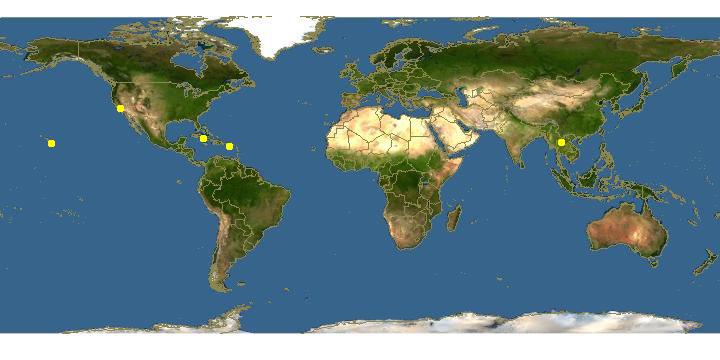
Click on map for details about points.
|
|
Overview | |
Cultivated on oak bark agar (at pH 6) or wMY agar (0.02 g malt extract, 0.02 g yeast extract, 0.75 g K2HPO4, and 15 g agar/L distilled water) with a mixture of Malaya bacterium and Kitani yeast. Sporocarp 28-78 Ám tall. Stalk 12-58 Ám tall, and broad with a conspicuous wrinkled basal disk and a swollen apophysis at the apex, 6-10.8 Ám broad. Spores globose, 19.2-25.5 Ám in diam. Spores geminate to produce plurinucleate plasmodia. Plasmodium reticulate, with thing filose subpseudopodia. Plasmodia enlarge by cell fusions or be nuclear division without plasmotomy. Plasmodia divide into a number of masses of prespore cells. Cysts round to ovate, elongated, or irregular in shape, 12-50 x 12-80(sometimes 150) Ám.
|
|
|
Links to other sites | |
|
|
|
Acknowledgements | |
The Eumycetozoan Project -- working to understand the ecology, sytematics and evolution of myxomycetes, dictostelids and protostelids -- the true slime molds.
Sponsored by grants from the National Science Foundation.
|
|
|
Feedback |
Please send any corrections and comments about this page to John Shadwick
Department of Biological Sciences, University of Arkansas, Fayetteville, AR 72701, USA
email: jshadwi@uark.edu
phone: USA-479-575-7393.
|
|
| Supported by | |
Updated: 2024-04-24 03:02:43 gmt
|